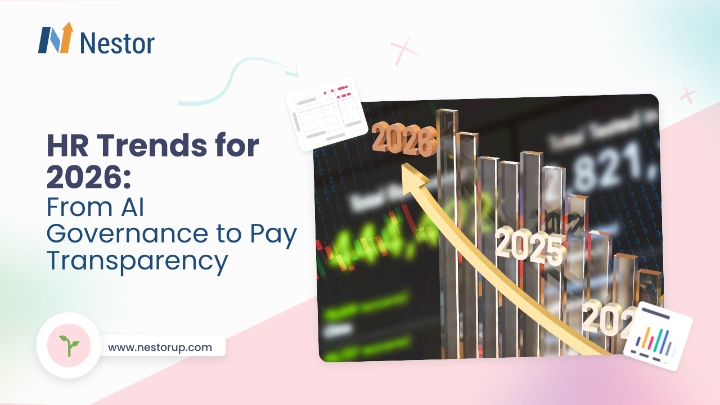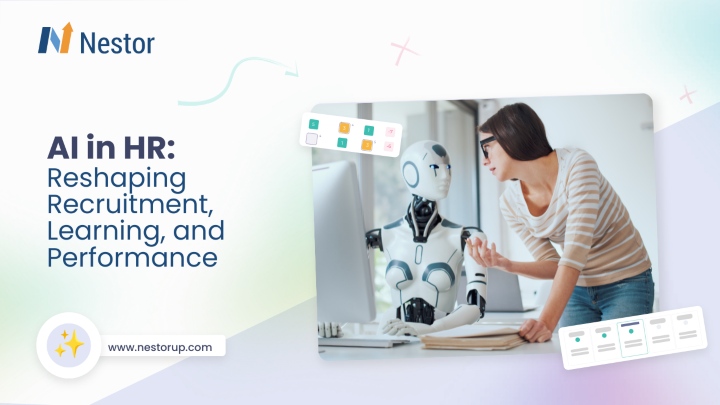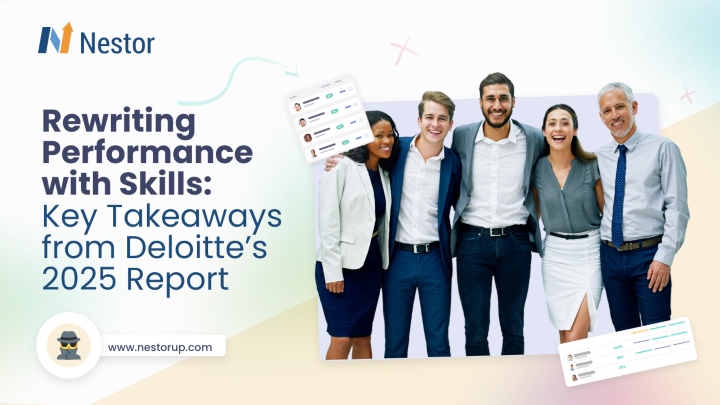
In an era of unprecedented change, HR leaders find themselves at the helm of a rapidly transforming workplace with new emerging HR trends. Technological advancements, shifting demographics, and evolving employee expectations are reshaping the very fabric of how we work. Gone are the days when human resources simply meant managing payroll and resolving workplace disputes. Today, HR stands at the forefront of organizational strategy, wielding the power to shape company culture, drive innovation, and ultimately determine the success or failure of businesses in an increasingly competitive global market.
As we delve into the future of work, it’s crucial to understand these emerging HR trends and their impact on both employees and employers. This comprehensive exploration of current HR trends will provide insights into how HR professionals can navigate this evolving terrain and position their organizations for success.
- The Changing Composition of the Labor Market
One of the most significant HR trends is the shift in workforce demographics. Today’s workplace is a melting pot of generations, spanning from Traditionalists to Gen Z. Because of this diversity, many organizations benefit from a wide range of viewpoints, working methods, and values. But it also presents unique challenges in managing such a varied workforce.
As people live longer, healthier lives, many are choosing to work beyond traditional retirement age. According to the Bureau of Labor Statistics, the labor force participation rate for individuals aged 65 and older is projected to increase to 21.7% by 2024, up from 18.6% in 2014. This trend requires organizations to rethink late-career paths, offering flexibility and new roles that leverage the wealth of experience these employees bring. Simultaneously, a rising youth population is entering the job market with fresh perspectives and tech-savvy skills. To attract and retain this talent, organizations must create dynamic, growth-oriented environments that speak to the aspirations of young professionals.
This aspect of workforce demographics is shaping many current HR trends. Successfully managing this generational diversity is no small feat. It requires policies that respect and harness these differences, creating a harmonious and productive work environment. Some strategies organizations are employing to address this HR trend include:
- Implementing reverse mentoring programs, where younger employees share their tech knowledge with older colleagues, while benefiting from their mentors’ industry experience.
- Creating flexible work arrangements that cater to different life stages and priorities.
- Fostering a culture of mutual respect and understanding, where diverse perspectives are valued and leveraged for innovation.
- Skills Shortage and Reskilling
Despite a growing global population, many industries are facing a critical shortage of skilled workers. This paradox is one of the most pressing HR trends, keeping HR professionals up at night: plenty of people, but not enough with the right skills.
By 2025, 85 million jobs may be displaced by a shift in the division of labor between humans and machines, while 97 million new roles may emerge that are more adapted to this new division.
— World Economic Forum
So, how do we bridge this skills gap? The answer lies in a two-pronged approach: reskilling and upskilling. This strategy is at the forefront of many HR trends focused on talent development. Reskilling involves training employees in a completely new set of skills, enabling them to take on different roles within the organization. Imagine a bank teller transforming into a data analyst, or a factory worker becoming a robotics technician. Upskilling, on the other hand, is about enhancing existing skills to meet evolving job requirements. It’s like upgrading your workforce’s capabilities to keep pace with technological advancements and changing business needs.
But here’s the key: learning can’t be a one-time event. Organizations must foster a culture of continuous learning, where employees are constantly updating their skills to stay relevant. Enter generative AI – the latest tool in the HR arsenal to tackle the skills crisis. This emerging technology is shaping many current HR trends. AI-powered platforms can:
- Analyze vast amounts of data to identify skills gaps within an organization
- Predict future skill needs based on industry trends
- Create personalized learning paths for each employee
Imagine an AI system that can predict that blockchain technology will be crucial for your industry in the next five years. It then identifies employees with adjacent skills who could be trained in blockchain, creates customized learning modules, and tracks their progress in real-time.
However, technology alone isn’t enough. To truly bridge the skills gap, organizations need to adopt a growth mindset at all levels. This mindset shift is becoming one of the most important HR trends. It means:
- Viewing challenges as opportunities to learn and grow
- Embracing failure as a stepping stone to success
- Fostering an environment where curiosity and experimentation are encouraged
The organizations that will thrive in this new landscape are those that view their workforce not as a fixed asset, but as a dynamic, evolving resource capable of continuous growth and adaptation.
- The AI Revolution in HR
This AI revolution is one of the most significant HR trends of our time, offering data-driven insights that are revolutionizing how HR operates. Let’s start with recruitment, an area where AI is making a big impact in current HR trends. Gone are the days of sifting through mountains of resumes. AI-powered applicant tracking systems can now scan thousands of applications in seconds, identifying the most promising candidates based on predefined criteria. But it doesn’t stop there. Natural Language Processing algorithms can analyze the language used in job postings to identify potentially biased language, helping to create more inclusive recruitment processes. This focus on unbiased, efficient recruitment is a key aspect of many HR trends.
In employee engagement, AI is enabling unprecedented levels of personalization. This personalization is one of the most exciting HR trends in recent years. Sentiment analysis algorithms can gauge employee mood from internal communications, alerting HR to potential issues before they escalate. AI-powered platforms can deliver personalized learning content, recommend career paths based on an employee’s skills and interests, and even predict flight risks, allowing HR to take proactive retention measures.
In workforce planning, AI is providing insights that were previously unimaginable. This predictive capability is shaping many current HR trends. Predictive analytics can forecast future skill needs, identify potential talent shortages, and even simulate the impact of different HR policies on workforce productivity and satisfaction.
However, as we embrace this AI revolution, we must also grapple with its ethical implications. This ethical consideration is becoming an important aspect of HR trends related to AI adoption. Questions of data privacy, algorithmic bias, and the potential for AI to perpetuate or even exacerbate existing inequalities are at the forefront of many HR professionals’ minds.
The key to navigating these challenges lies in adopting a human-centered approach to AI implementation. This human-centered approach is becoming one of the most important HR trends in AI adoption. It means:
- Viewing AI not as a replacement for human judgment, but as a tool to enhance it
- Being transparent about how AI is being used, and giving employees control over their data
- Constantly monitoring and auditing AI systems to ensure they’re producing fair and unbiased outcomes
As we move forward, the most successful organizations will be those that find the right balance between human intuition and AI-driven insights. They’ll be the ones who use AI to handle routine tasks, freeing up their human workforce to focus on what humans do best – creative problem-solving, emotional intelligence, and building meaningful relationships. This balance between AI and human skills is at the heart of many current HR trends.
- The New Employee Expectations
The evolution of employee expectations is one of the most significant HR trends of our time. The days when employees were satisfied with a steady paycheck and the promise of a gold watch at retirement are long gone. Today’s workforce is looking for something more – they’re seeking purpose, growth, flexibility, and a sense of belonging. They don’t just want a job; they want an experience that enriches their lives and aligns with their values. This shift in expectations is shaping many current HR trends.
The pandemic has accelerated the shift towards remote and hybrid work models. A survey by Gartner found that 82% of company leaders plan to allow employees to work remotely some of the time as they reopen workplaces. This flexibility extends beyond just location – employees are seeking more control over when and how they work as well.
Let’s break down these new expectations, which are at the forefront of many HR trends:
Flexibility: The pandemic has accelerated a trend that was already in motion – the desire for more control over when and where work happens. This flexibility is one of the most prominent HR trends in recent years. Remote and hybrid work models, once seen as perks, are now expected by many employees. A survey by Gartner found that 82% of company leaders plan to allow employees to work remotely some of the time as they reopen workplaces.
But it’s not just about working from home. It’s about having the autonomy to structure one’s work life in a way that allows for better work-life integration. This might mean choosing to work when they’re at their most productive, whether that’s at 6 AM or 11 PM, or having the flexibility to attend a child’s school event without taking a full day off. This focus on work-life integration is shaping many current HR trends.
Purpose-driven work: Today’s employees, particularly younger generations, want to know that their efforts are contributing to something meaningful, beyond just the company’s bottom line. This focus on purpose is one of the most important HR trends in recent years. Employees are asking questions like: Does this company’s mission align with my values? Am I making a positive impact on the world through my work?
This shift is forcing organizations to rethink their employee value propositions. It’s no longer enough to offer competitive salaries and benefits. Companies need to articulate a compelling vision, demonstrate their commitment to social and environmental responsibility, and show how each employee’s role contributes to the bigger picture. This redefinition of employee value propositions is at the heart of many current HR trends.
Growth and development: In a world where skills can become obsolete in a matter of years, employees are looking for organizations that will invest in their continuous learning and development. This focus on continuous learning is one of the most significant HR trends in talent management. Employees want clear career progression paths, mentorship opportunities, and the chance to work on challenging projects that stretch their abilities.
Interestingly, the definition of career progression itself is changing. It’s no longer just about climbing the corporate ladder. Many employees are interested in lateral moves that broaden their skill set, or even taking a step back in seniority to explore a new field. The career path of the future looks less like a straight line and more like a jungle gym, with multiple paths to the top and plenty of opportunities for exploration along the way. This redefinition of career progression is shaping many current HR trends.
Wellbeing: Employee wellbeing has moved from a nice-to-have perk to a fundamental expectation. This focus on holistic wellbeing is one of the most important HR trends in recent years. Employees are looking for organizations that prioritize their physical, mental, and emotional health. This goes beyond just offering gym memberships or mindfulness apps. It’s about creating a culture that truly values work-life balance, provides robust mental health support, and recognizes that employees are whole human beings with lives and responsibilities outside of work.
So, how can organizations meet these evolving expectations? It starts with listening. Regular pulse surveys, focus groups, and one-on-one conversations can help HR professionals understand what their specific workforce values most. This focus on employee listening is becoming a crucial aspect of many HR trends. It’s about creating a culture of feedback, where employees feel heard and their input shapes company policies and practices.
Next, it’s about walking the talk. If you say you value work-life balance, make sure your leaders aren’t sending emails at midnight. If you claim to offer growth opportunities, ensure you have clear development paths and resources in place. Authenticity is key – employees can spot empty promises a mile away. This emphasis on authenticity and alignment between words and actions is shaping many current HR trends.
Finally, it’s about personalization. Just as marketing has moved towards hyper-personalized consumer experiences, HR needs to move towards personalized employee experiences. This personalization is one of the most exciting HR trends in recent years. It might mean offering a menu of benefits that employees can customize based on their needs, or creating flexible career paths that allow for individual aspirations and life circumstances.
5. Strategic Workforce Planning
In an era of unprecedented change and uncertainty, strategic workforce planning has evolved from a nice-to-have into a critical business function. This evolution is one of the most significant HR trends of our time. It’s no longer just about having the right number of people with the right skills at the right time. It’s about creating an agile, adaptable workforce that can pivot quickly in response to changing market conditions, technological disruptions, and shifting business strategies.
At the heart of this new approach to workforce planning is data. This data-driven approach is shaping many current HR trends. Big data analytics and AI are providing HR leaders with insights that were previously unimaginable. For instance, predictive analytics can analyze patterns in employee data to forecast turnover rates with surprising accuracy. By identifying the factors that contribute to employee churn – whether it’s lack of growth opportunities, poor management, or misalignment with company values – HR can take proactive steps to improve retention before valuable talent walks out the door.
But data alone isn’t enough. The real magic happens when you combine data-driven insights with human intuition and business acumen. This blend of data and human insight is at the forefront of many HR trends. This is where HR leaders need to step up and become true strategic partners to the business. They need to understand the organization’s long-term goals, anticipate future challenges, and align workforce strategies accordingly.
One key trend in strategic workforce planning is the focus on skills rather than roles. This skills-based approach is one of the most important HR trends in talent management. In a rapidly changing business environment, specific job titles may become obsolete, but underlying skills remain valuable. Forward-thinking organizations are creating skills inventories, mapping the skills they have against the skills they need, and developing strategies to bridge the gap.
This skills-based approach also opens up new possibilities for internal mobility. Instead of looking at career progression as a linear path within a specific department, organizations can create opportunities for employees to move laterally, developing new skills and bringing fresh perspectives to different areas of the business. This focus on internal mobility is shaping many current HR trends.
Another critical aspect of strategic workforce planning is scenario planning. This forward-thinking approach is becoming increasingly important in HR trends related to workforce planning. Given the unpredictability of today’s business environment, HR leaders need to prepare for multiple possible futures. This might involve creating different workforce models based on various business scenarios – rapid growth, market contraction, technological disruption, etc. – and developing flexible strategies that can adapt to whichever scenario unfolds.
Perhaps the most significant shift in strategic workforce planning is the move towards a more holistic view of the workforce. This holistic view is at the heart of many current HR trends. This means looking beyond just full-time employees to include gig workers, contractors, and even AI and automation as part of the total workforce mix. It’s about finding the right balance of human talent and technological capabilities to drive business success.
- Diversity, Equity, and Inclusion (DEI): A Paramount HR Trend
The focus on Diversity, Equity, and Inclusion has never been more prominent. This emphasis on DEI is one of the most significant HR trends of our time. Organizations are recognizing that a diverse workforce isn’t just the right thing to do – it’s a competitive advantage. A study by McKinsey found that companies in the top quartile for gender diversity on executive teams were 25% more likely to have above-average profitability than companies in the fourth quartile.
But true DEI goes beyond just hitting diversity quotas. This comprehensive approach to DEI is shaping many current HR trends. It’s about creating an inclusive environment where all employees feel valued, respected, and empowered to contribute their best work. This involves:
- Unconscious bias training: Helping employees recognize and mitigate their own biases.
- Inclusive recruitment practices: Ensuring job postings and interview processes are designed to attract and fairly evaluate diverse candidates.
- Creating support networks: Establishing employee resource groups for underrepresented groups.
- Inclusive leadership: Training leaders to foster an inclusive environment and make fair, unbiased decisions.
- Pay equity: Regularly reviewing and addressing any pay disparities based on gender, race, or other factors.
- Accessibility: Ensuring the workplace (both physical and digital) is accessible to employees with disabilities.
Successful DEI initiatives require commitment from the top. This top-down commitment is becoming a crucial aspect of HR trends related to DEI. Leadership must not only support these efforts but actively champion them, modeling inclusive behaviors and holding the organization accountable for progress.
- Remote and Hybrid Work Models: A Transformative HR Trend
The pandemic-induced shift to remote work has evolved from a temporary measure to a permanent feature of the work landscape. This shift to remote and hybrid work is one of the most transformative HR trends in recent years. Many employees, having experienced the benefits of working from home, are reluctant to return to full-time office life.
This shift brings both opportunities and challenges for HR:
Opportunities:
- Access to a wider talent pool, unrestricted by geographical location
- Potential cost savings on office space
- Increased employee satisfaction and work-life balance
- Potential for increased productivity for some roles
Challenges:
- Maintaining team cohesion and company culture in a virtual environment
- Ensuring equity between remote and in-office employees
- Managing performance and productivity remotely
- Addressing the mental health impacts of isolation
- Navigating the legal and tax implications of a distributed workforce
Successfully managing remote and hybrid teams requires new skills and strategies. This need for new management strategies is shaping many current HR trends. These strategies include:
- Clear communication: Establishing robust channels for both formal and informal communication.
- Results-oriented management: Focusing on outcomes rather than hours worked.
- Virtual team building: Creating opportunities for social interaction and relationship building in a virtual setting.
- Technology infrastructure: Ensuring all employees have the tools and technology they need to work effectively from anywhere.
- Wellbeing
Final Thoughts
As we stand at the precipice of a new era in human resources, it’s clear that the role of HR professionals has never been more crucial or complex. The trends we’ve explored – from the changing composition of the workforce to the AI revolution, from evolving employee expectations to the imperative of diversity and inclusion – are not just passing fads. They represent fundamental shifts in how we think about work, talent, and organizational success.
The future of HR is not about simply managing human resources; it’s about unleashing human potential. It’s about creating workplaces where diverse talents can flourish, where employees find purpose and growth, and where organizations can adapt swiftly to change. As we navigate this future, HR professionals have the opportunity – and the responsibility – to shape not just the world of work, but the very fabric of our society.
The challenges are significant, but so are the opportunities. By embracing these trends and the possibilities they present, HR can lead the way in creating more human-centered, resilient, and successful organizations. The future of work is here, and HR is at its helm. It’s time to chart the course for a new era of human potential and organizational excellence.










